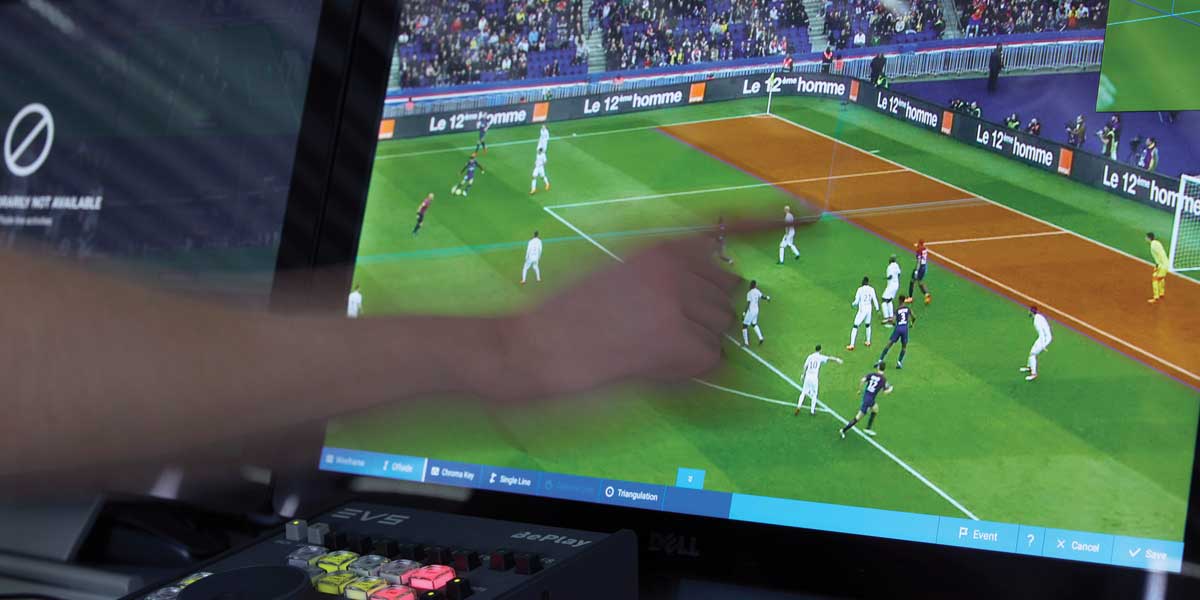Transformative AI

Posted on Apr 17, 2024 by FEED Staff
The long-term impact on content quality will be positive
Artificial intelligence’s rise in broadcast has prompted one of the industry’s most fevered debates for decades. For Olivier Barnich, head of innovation and architecture at EVS, there are plenty of reasons to feel positive
Sponsored editorial
The regular emergence of new production formats and techniques plays a big part in keeping the media and entertainment industry fresh and dynamic.
But, while the likes of 4K and HDR have certainly generated their fair share of headlines, they have both been outstripped by the phenomenal and ever-growing level of discussion about AI.
While some vendors are only just beginning to experiment with AI-based applications, EVS was one of the first major names to engage with the new opportunities.
Indeed, it recently published an extensive white paper, entitled ‘Beyond slow-motion: enhancing live replays with AI-powered special effects’ that lays out the company’s thinking with regard to the use of AI to enhance live replays.
The document also recognises the scope for production resources to be optimised by ‘automating time-consuming tasks and enabling new creative capabilities’.
Content search and identification – not least in sports, which is a key market for EVS – are among the areas where head of innovation and architecture Olivier Barnich discerns the greatest time-saving potential.
“The game changer here is the ability to truly automate image and video understanding with AI,” he explains. “Soon, AI-backed search in content databases will not be limited to looking for people, common objects and logos detected with ad hoc tools beforehand. In fact, operators will have the ability to search for anything without needing to decide before the game which ad hoc detectors might be useful to run on the content of the day. So, it will be possible to issue search queries in natural language, eg ‘view of a crowd stadium’, ‘close-up of a goal cage’ or ‘soccer player lying on the ground of a soccer field’ as an example.”
With this result, production teams can search efficiently across large content databases, with plentiful opportunity to discover ‘hidden gems’ in every stream from every camera. “Moreover, the understanding of the image by AI will allow the operator to search not only for what’s in the image, but also for what the image of the shot looks like,” notes Barnich. “Just think about being able to search for a ‘panning shot of a soccer player with a blurry background’!”
AI-assisted replay
Predicting that the ‘long-term impact on content quality will be positive’, Barnich is excited by the fresh creative options for replay operators already being heralded by EVS innovations such as XtraMotion – an AI-based service allowing production teams to transform any live footage, as well as post and archived content, into super slow-motion replays.
“Our XtraMotion product is proof that it is now possible to create AI in real time during live production,” he says, “and we aim to replicate that with more ways of elevating replays. Removing motion blur, simulating lenses of wide aperture to shorten the depth-of-field, increasing spatial resolution, adding augmented reality graphics and so on.”
EVS also plans more enhancements to other existing AI-based products – including the Xeebra multicamera virtual offside line review system – which leverages AI to provide a precise (Fifa-certified) offside line in augmented reality, alleviating ‘the need for tedious calibration of the cameras’.
“We intend to continue working on improving the precision of the offside line, alongside shortening as much as possible the time needed to provide the images to referees to make the best decision,” Barnich continues.
With additional image enhancement processes for live replays also under consideration, it’s safe to assert EVS has a significant AI-related workload.
But, in addition to his own optimism about the future of this technology, Barnich also strikes an upbeat note about the transformational trajectory of the industry as a whole, suggesting it can be achieved successfully with rigorous planning.
“Regarding the long-term impact on the broadcast and media industry as a whole, it’s mostly about upskilling and change management,” he explains. “Mastering this new technology and the set of new tools that derives from it will be a challenge for all of us, but I’m confident we’ll be able to manage that shift gracefully.”
This sponsored editorial was first published in the Spring 2024 issue of FEED.











